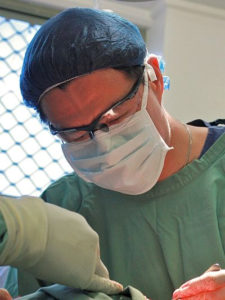
1. Are you qualified to perform cosmetic breast surgery?
Don’t assume a surgeon is qualified – check their credentials! Plastic surgery is regulated by organisations like the Australian Society of Plastic Surgeons and the Australasian Society of Aesthetic Plastic Surgery.
During a consultation with Dr Choy, you’re invited to ask any questions you have regarding his qualifications, including his double specialist surgical fellowships from the Royal Australasian College of Surgeons (FRACS) in both general surgery (with a focus in breast & skin oncology), as well as plastic & reconstructive surgery (with a focus in face, breast & body work).
As a member of both, Dr Choy is knowledgeable, experienced and rigorously trained by accredited institutions.
2. How much experience do you have with breast augmentations?
Though your doctor may be qualified, they may not have a lot of experience with breast augmentation surgery. Maybe they perform twenty rhinoplasties and a few liposuction procedures every week, but they’ve only ever performed two breast augmentations. If your surgeon doesn’t have regular, ongoing experience doing breast augmentation procedures – and before & after photographs to prove it – you may want to shop around.
Practice helps surgeons improve their craft, so choose a doctor with ample experience. To gain exclusive access to Dr. Choy’s Breast Augmentation Before & After Series, request a preview today.
3. What should I expect on the day of my surgery?
When you arrive at the hospital you’ll change into a gown to prep for surgery. The doctor may use a surgical marker to draw lines on your body while you’re still standing, before lying you down to administer a general anaesthesia or sedative. If you are receiving a sedative, a numbing agent will also be administered. You’ll have no memory of the procedure from there forward if you receive general anaesthesia. If you receive a sedative and a numbing agent, you’ll be awake and aware, but restful and calm during the surgery.
The doctor will then make an incision either around the nipples, under the breasts, or in the armpit depending on the type and size of the implant. Once implants are in place, the doctor will stitch up the incisions. At this time, you’ll be moved into a recovery room, where experienced nurses will help you stay comfortable and ensure you are fully informed of all post-operative procedures.
4. What are the risks?
In reality, all surgeries involve risk; you may experience numbness in the breasts for some time after the procedure; silicone implant ruptures can go unnoticed (silent rupture), which can lead to health issues later on; saline implant ruptures can happen at inconvenient times, which can only be repaired through additional surgery; and some patients experience capsular contracture, the development of scar tissue around the implant.
If your doctor decides to use general anaesthesia, there are additional risks to consider. Dr Choy’s operating and anaesthetics team are not just fully qualified and trained – they’re backed by extensive surgical experience and take every precaution to protect patient safety.

5. What’s involved in the recovery process?
Ask a friend or relative to drive you home after the surgery and stay with you for the first 24-48 hours, during which time you can expect to feel uncomfortable. Dr Choy provides his patients with a custom-designed special post-operative compressive garment or bra to offer support and manage swelling, along with instructions on how to care for your breasts.
Ensure you take any medications prescribed on schedule and if advised to apply ointment to incisions, follow instructions exactly to promote recovery. Most women experience soreness and swelling for the first few weeks following the procedure, but if you get plenty of rest and take medications as prescribed, you will likely be back to your normal, active self by six weeks post-op.
6. How much time should I take off from work?
If your surgeon plans to insert implants under the muscle tissue (as opposed to placing them under the glands or the fascia), this can lengthen the recovery process.
The amount of time you take off from work will however depend on a number of variables. Many women are able to return to work within just three days, while others choose to take a week off to relax and recuperate – it’s your decision.

7. How long until I see the final surgery results and how long will they last?
You’ll see the results from your breast augmentation surgery in stages. Most of the swelling will be gone within three months, but scars from incisions may still be inflamed and red at this time. Expect to see the final results within a year when swelling has resolved and scars have become less noticeable. Results from breast implant surgery can for years, but breast implants are not intended to be lifetime devices.
Not sure if breast augmentation surgery is for you? Dr Choy understands the complexities women face during the decision-making process. Book in for an appointment with Dr Choy today and have all your questions answered.
Categories: